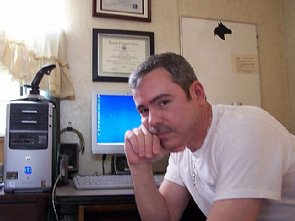“AN INTERESTING PARALLEL”
By: Timothy C. Jones
The new and exciting theory of Everett’s “Many Worlds Interpretation,” is gaining much ground in today’s quantum physics. From the “Big Bang” theory to “String Theory,” it all seems perplexing to the average person. The theory of “Many Worlds” is really not that difficult to understand if you are willing to be open-minded and “tune-in.”
The popular website, “How Stuff Works,” describes the “Many Worlds Interpretation,” as being an explanation of “Many Worlds” with a theory based on quantum mechanics and “that it undermines our concept of time as linear.” How could time not be linear? One might argue against it, but “Many Worlds” would interpret it differently, and to some, the result would be “disturbing,” says Josh Clark, author of “Do Parallel Universes Really Exist?”
According to “How Stuff Works,” Josh Clark writes: “a measurement taken of a quantum object causes an actual split in the universe.” This statement is very intriguing in regard to quantum mechanics further explained by the article’s author. Clark’s article which deals with the explanation Everett gives is that: “The universe is literally duplicated, splitting into one universe for each possible outcome from the measurement.” Daunting, isn’t it? Not really, if you think about the universe as being “fluid” instead of “rigid.”
It all devolves down to measurements of quantum objects. Think of a quantum object as a particle of light or wave of light. Ok, which one is it? Actually, it can be both, but not at the same time. And this is where it gets interesting. Say that, a scientist decides to measure this object. How does he do it if the object is both? He can’t. Then, the universe does something really interesting, says Josh Clark, which details Everett’s theory of “Many Worlds interpretation.” And when: “a scientist in one universe finds that the object has been measured in wave form,” thus the other scientist, in a parallel universe, you guessed it, “measures the object as a particle.”
Now here is where the “disturbing” part comes in and for most is the most distasteful part of the theory, but this could also explain “déjà vu” or “sudden insight.” This is delving into the “real depths of the unknowns,” but is fascinating to say the least. Ok, ready for the “blood and guts?” Here goes. “How Stuff Works,” Josh Clark illustrates the distasteful reality of the theory by supposing: “if you have ever found yourself in a situation where death was a possible outcome, then in a universe parallel to ours, you are dead,” but could be a reason why some people seem to possess “hidden insight” about events real or unreal in our own universe? Or is it our own “parallel” universe? Anyway, you get the picture.
“Shudder at the thought,” “A possum ran over my grave,” “To think it is to do it,” or “A stitch in time saves nine,” could be real-world “layman-think” which appear to support a theory that seems to have “rebooted” itself into popular and sometime, not-so-popular main-stream evidence of “How Stuff Works,” especially in J.J. Abrams’ new “Star Trek Movie” reboot and also in Everett’s theory of “Many Worlds” interpretation of quantum mechanics.
Now, I just wonder how many “me’s” are clicking the “say-it” button on all of those “TrekMovie” web-sites out there posting alternate versions of this article? There is no telling how many, but if I know my Spock Primes or the many times I have error-corrected this article and E-Mailed it to Anthony, I dare say that “they” are driving a multitude of “alternate” Anthony Pascales crazy!
Source: Clark, Josh. “Do Parallel Universes Really Exist?” How Stuff Works. July 8, 2009. http://science.howstuffworks.com/parallel-universe2.htm
Wednesday, July 8, 2009
Blog Archive
-
▼
2009
(12)
- ► 05/10 - 05/17 (1)
- ► 04/26 - 05/03 (1)
- ► 04/05 - 04/12 (1)
- ► 03/29 - 04/05 (2)
- ► 03/08 - 03/15 (2)
- ► 02/15 - 02/22 (2)
- ► 02/08 - 02/15 (1)
- ► 01/04 - 01/11 (1)
-
►
2008
(9)
- ► 12/28 - 01/04 (1)
- ► 11/16 - 11/23 (1)
- ► 11/09 - 11/16 (2)
- ► 09/21 - 09/28 (1)
- ► 09/14 - 09/21 (1)
- ► 08/24 - 08/31 (1)
- ► 08/17 - 08/24 (1)
- ► 08/10 - 08/17 (1)
Who the heck is this guy?

- TREKWEBMASTER
- Greenbrier, Arkansas, United States
- A Star Trek fan from the old black and white television days, currently studying digital film with an emphasis in mass communication at the University of Central Arkansas in Conway. Areas of special interest include audio production, soundtrack production, editing, cinematography, and new media.



